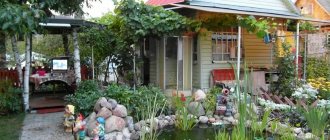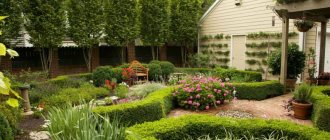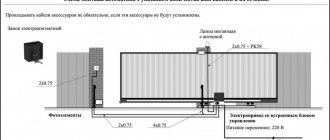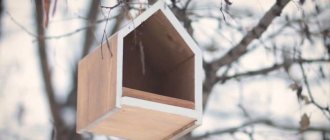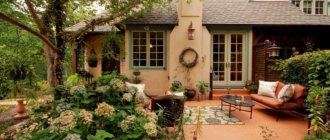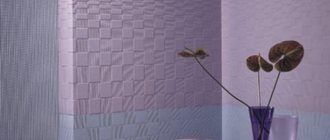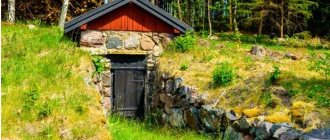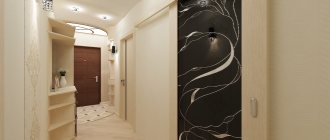Home » Landscape design » Site planning and design
Editor choice
Site layout and design
Svetlana 03/18/2020
85481 Views
SavingSavedRemoved 14
If you have a summer house, and at the same time you are a talented and creative person, we suggest you take up landscape design of the site. Using our recommendations and photos of professionals, you can create your own unique ecosystem.
Introduction
Join the exciting world of landscape design
Each garden plot, with proper planning and proper planting, can provide aesthetic pleasure. In addition, contemplating green spaces against the backdrop of a harmonious landscape will relieve stress and strengthen your nerves. Experience the thrill of peaceful contemplation of the natural beauty that lies in every flower, blade of grass, drops of dew on the lawn, the glare of the sun on ripening apples.
Plants will become connecting elements that will help create unity from the diversity of elements of your site
Plants are the richest material in shape, texture, and color. They will allow you to turn an unremarkable area into a piece of paradise, highlight and enrich the appearance of any building.
Conclusions and wishes
Of course, I understand that it is impossible to talk about all the intricacies of landscape design in one article. That's why I didn't set such a goal for myself. It was important to give you the basics, to indicate what you need to pay attention to first when arranging the site.
And now I hope that the question of how to create a landscape design with your own hands for beginners will not be so difficult and frightening. The main thing is to really have the desire to change for the better a small piece of the planet called a garden or personal plot, to make it more beautiful, cozy and attractive. If each of us strived for this, we would already live in a different world.
If, in addition to landscape design, you are also interested in interior design, then you can read about it and get many interesting ideas in the article Interior design - all the important points.
Good luck to you in implementing your most daring plans and plans.
Best regards, Alexander Tkachenko.
Site preparation
Flowers are designed to turn the garden into a fabulous place
Give part of the land for buildings, allocate a small piece for a utility yard, and the rest of the space is a wide field for realizing your landscape ideas. The choice of plants depends on your taste, preferences, and intended goals. A plot of land can look very decorative, even if it is almost entirely planted with fruit trees and berry fields.
Decorate blind fences with trellises and hanging flowering plants
Trees can be planted in alleys, berry fields can be used to make picturesque hedges, vegetable crops can be planted along garden paths as borders, and terraces with fruit crops can be placed behind them.
A bench is both useful and decorative
Try to use not only annual plants, but also perennials and shrubs in combination with lawns, small architectural forms, fountains, statues, arches, and benches.
The use of small architectural forms will diversify and enliven the site
Lawns and flower beds are the basis of the landscape
If the landscape of a suburban area looks chaotic, a lawn will save the situation. It will become a unifying background for the entire composition and will delight the eye with its well-groomed appearance. Many tricks to help create the perfect grass carpet relate to the selection of grasses and the type of lawn:
- The type of lawn is selected according to the method of use. An English or meadow lawn looks the most picturesque, but such a carpet can only be admired, you cannot walk on it.
- If you're looking for a lawn that's perfect for a fun game or picnic, consider a sports turf that can withstand heavy use.
English lawn
Planning
The first step is to plan the site. Prepare a plan on paper for the placement of plants and objects. The distribution of area is a matter that depends on the taste and preferences of the owner of the estate.
First we plan the site
The approximate ratio of the various elements may be as follows:
- Buildings 100 m2
- Utility yard 70 m2
- Access paths for transport 120 m2
- Flower beds 60 m2
- Garden crops 200 m2
- Vegetable garden 140 m2
The placement plan is transferred to the site, and a division into squares is applied using scaling.
- The lines are secured with sharp pegs, drawing or pressing
- The grooves can be sprinkled with lime to make them clearly visible.
Pay special attention to the accuracy of the transfer of lines, plan transitions, paths, and possible planting locations.
Subtleties of creating a project
Landscape design - creation of construction diagrams and drawings, design sketches, explanatory recommendations. The complex of these and other works is design. It is very important to think through everything to the smallest detail in order to create a high-quality site design on paper or in 3D format. Only after this can you move it onto the territory.
Landscape design - a guide to action! The more precise the project is, the easier its implementation!
In order to properly design the landscaping of the territory, you need to work hard and complete a set of works:
- Deciding on a style is the first stage. English, Regular, Scandinavian. How do you see landscape design on your site? With winding paths as if created by nature itself or unusual decor with crafts and a combination of different styles?!
- Survey the site, carry out cleaning, clearing.
- Select plants that combine colors and sizes that are suitable for the given region.
- Draw the layout of existing and future objects on paper or on a computer (make a sketch).
When creating a comfortable arrangement of the territory, it is important to decide what you want to see on the site. Don't chase the latest fashion trends if you don't like them.
In the process of creating a project, determine the purpose of the land plot or its individual zones. It is equally important to study the terrain. If you decide to use the services of our company, surveyors will come to the site together with the designers.
The terrain is tested according to the following parameters:
- soil structure, its composition and groundwater occurrence;
- depth and location of communications;
- problem areas of the territory;
- the condition of existing vegetation, in particular trees and shrubs;
- architecture of buildings.
Decorating techniques
Don’t rush to uproot old trees to make room for potatoes or tomatoes, think about how they will look against the general background of your site. Perhaps old trees or stumps will determine the future layout of the entire garden.
Decorative canopy made of dry, cut trees
If your area is small, use clever techniques that will make it appear larger. For example, a secluded resting place in the shade contrasts effectively with the brightly lit lawn in front of the apple orchard. Use paths with turns every 8 - 10 meters, this will visually enlarge a small area.
Cozy sitting area
There is an opinion that the ideal area is a flat surface. We don’t argue that it is much easier to process than embossed, but its appearance is dull and monotonous.
Nature does not like straight lines and right angles; a site with clearly defined relief, natural drops, and elevations looks much better. These landscape features can be used to create alpine slides and artificial reservoirs.
It is not advisable to sharply limit your area with a high hedge or fence. In general, the layout should be concise, convenient, and the land should work for you with maximum efficiency.
An interesting design technique is dividing the garden into zones:
- Entrance
- Economic
- Ogorodnaya
- Sadovaya
- Resting-place
- Playground for children
The boundaries between these zones should be purely conditional.
Use natural hedges from bushes, arches, small architectural forms for this.
Take care to camouflage unsightly buildings, do not place outbuildings too close to the entrance or resting place
Don't reward too many plants. Excessive varietal diversity burdens perception. Try not to make your small plot look like a collective farm garden or an industrial garden for growing tomatoes or other crops. Combine garden crops with ornamental plants.
White Pergola
A neatly trimmed lawn, the water surface of a small pool, several natural stones, a pergola with hanging lemongrass or clematis will decorate the area and increase varietal diversity. Don’t rush to uproot old stumps; perhaps they will become strongholds for creating decorative islands
An interesting version of a flower bed made from an old log
Functional areas of the garden plot
Zoning is that the area of a land plot is divided into zones , each of which has its own functional load :
- front door : people enter here or cars enter, no more than 6% of the entire site;
- recreation area : from 10 to 14% of the total territory;
- household : includes garage, greenhouses, etc.;
- playroom : a place for children's entertainment;
- gardening : up to 75%;
Some zones are combined into one space, saving space.
Secrets of beautiful flower beds
Creative gardener's workshop
- Flower beds occupy a special place in landscape design
- Small well-groomed flower beds look more impressive than large areas with a clumsy jumble of heterogeneous plants
- Planting a beautiful plant is not everything
- It is important to choose a point from which a wide panoramic view of the landscape you have created will open
A natural hill, a mound, a terrace, or the shore of an artificial reservoir are perfect for this. In summer cottages, as a rule, the panoramic view is very limited, so the center of the garden should be open for viewing.
Creating a Basic Plan
The next step is to study how plans are drawn up on paper. Here it is necessary to recall geometry and drawing from the school curriculum. For work you will need: a ruler, a compass and a triangle. All data obtained from measuring the working area is transferred to graph paper. It is important not to miss a single detail. The diagram is drawn up on a large scale, approximately 1:50 or 1:100.
When starting to transfer working outlines to paper, it is worth following a certain sequence:
- Initially, we draw the general boundaries of the site. We transfer the presence of buildings to the diagram.
- We fix permanent elements, such as trees, a pond or hedges.
- It is necessary to indicate on the plan the direction of the winds.
- We must not forget about the paths and paths; we must record them on paper and indicate their direction.
The plan should be as detailed as possible, then young student designers can avoid most mistakes in their work. This stage is very important. Although for most creative people it will seem very boring and tedious, without such a base it is simply impossible to carry out competent landscape design.
Making a plan is an important part of design
Now it's time to get out your colored pencils and markers. At this stage, it is necessary to sketch the following parameters:
- areas of land with high humidity;
- sunny, open or shaded areas;
- soil zones.
Experienced experts recommend capturing each such area on a separate sheet of tracing paper. This sheet is initially applied to the main diagram, the border and this territory are transferred (and so on for each zone separately). Collectively, these sheets will form a map of the site.
Drawing a site plan using a computer program (video)
It is worth saying that at the same time you can learn to work with graphic programs, and there are a considerable number of them, but after completing the basic diagram several times manually, it is much easier and simpler to understand the essence of the images on a computer map. It is necessary to delve into and understand how each sector is represented on the work site. A professional designer uses 2 types of programs in his work: these are graphic ones, for making a basic diagram, and those that allow you to create three-dimensional images. With their help, the entire set of landscape forms and plant units is transferred and recorded on the map.
2D site planning using a computer program
The latest programs are used at the final stages of work. Studying these systems will make your work much easier and will allow you to work out your design concept down to the smallest detail. Taking measurements of the site, creating a basic diagram and map of the territory - this is the very first step towards creating a landscape design. Many professionals still prefer to make their maps by hand. This is painstaking work, but it is fundamental in creating a beautiful design project. Young and novice designers should be patient and master the basics of this work.
Decoration elements in areas with different types of relief
If you are the owner of a flat area, then it is appropriate to use the decoding method of placement. Enclosing tracts of tall shrubs are planted along the perimeter of the site. These plantings will delay strong gusts of wind and reduce noise.
Low shrubs and dwarf trees should be planted near the building; the house should not be in the shade. If the site is located on a slope, then the plants are planted so that they emphasize the beauty of the relief.
A site that harmoniously fits into the natural environment
If the house is built on top of a warehouse, then it is better to plant tall trees closer to the building. In this case, they will enhance the vertical sensation of the relief. It is appropriate to place low-growing shrubs in the foreground.
How to visually increase the area of the site?
To beautifully and functionally arrange a small area, adhere to the main rule - give up gigantomania. Say “no” to large buildings, and distribute those that already exist throughout the territory, alternate with recreation areas and disguise them with bushes. And don’t chase the number of plantings - it’s better to think carefully about how they fit together.
Avoid trees with massive root systems and those that will eventually become the size of a house. Limit yourself to a group of neat, low-growing fruit varieties. And definitely don’t enclose the area with a high, blank fence - it will be cramped and gloomy, not cozy.
To visually enlarge the space, use smooth and smoothed shapes without sharp and aggressive geometry. For example, if the path is winding between flower beds and bushes. The darkest and most distant corners were highlighted with white or yellow colors.
Photo: remontbp.com
How to get rid of ants: the best folk remedies
Pond at the dacha
A miniature fountain will not take up much space
The center of your garden can be an artificial pond, decorated with natural stones and coastal vegetation. An artificial pond will not only decorate your garden, but will also create a soft microclimate and attract feathered friends. Birds will be happy to fly to an impromptu pond to drink on a hot summer day.
The easiest option is to construct a small reservoir from ready-made containers - tanks, bathtubs. The products must be placed in a hole so that the edges protrude two dozen centimeters above the ground.
To give the pond a natural look, line its edges with stones, large pebbles or gravel.
The optimal shape for an artificial reservoir is oval, round or with uneven bank contours. Such miniature ponds will naturally fit into the landscape design of the site.
The water mirror can be of different sizes
- Nice micro-reservoirs with an area of 1m2
- If your summer cottage has an area of 600-700 m2, the artificial pond should be about 5-9 m2
- Optimal depth 30 – 40 cm
- In such a reservoir, the bottom is visible, pebbles, aquatic plants, and fish are clearly visible
It is necessary to carefully ensure that there is no water seepage in your artificial pond.
- First of all, they dig a pit, the bottom must be leveled, slopes must be made
- Moistened clay is placed at the bottom, kneaded well, tamped and dried, then a second layer of clay is applied, tamped and sprinkled with coarse river sand.
- A plastic film is placed on the second layer of compacted clay, and a layer of sand is covered on top.
Construction of a multi-tier pit
The size of the film should be larger than the foundation pit, its edges should protrude beyond the artificial reservoir
- To give the film durability, its edges are completely covered with soil.
- After this, the bottom of the artificial reservoir is covered with a layer of roofing felt, so that the film does not perforate during planting.
- Water is poured from the irrigation system; when the water level drops, top up from a hose
- Before the onset of cold weather, water is removed from the pond
If you want to leave water, in order to reduce the pressure of the ice block on the walls of the reservoir in the fall, place several short logs in the water, they will play the role of shock absorbers.
If the sides of your mini pool are high enough (50 - 60 cm), decorate them with granite or sandstone, line them with a ridge or mixborder.
Before planting vegetation near an artificial reservoir, prepare the soil; it should be heavy, with clay, silt or humus. The water surface itself looks very attractive, but if you add floating plants with beautiful leaves, the water surface will look even more beautiful.
Use salvinia floating, water chestnut, duckweed, nymphea, eggplant, cattail.
Nymphea. The most beautiful tropical forms of this plant of various colors and flower shapes are available for sale.
Salvinia floating
- Coastal plants can be placed around the pond, and also deepened into the water by 10-15 centimeters; they love heavy silty soils
- Plant hosta, daylily, bergenia, fern, and forget-me-nots next to the pond.
- Plant a hoofweed on the north side, it grows quickly and covers the surface of the soil with its beautiful leaf plates
- When growing nymphs in an artificial reservoir, it is necessary to use containers up to 20 cm high. Plants are sent to the basement for wintering
- During winter storage, the plant does not have to be immersed in water; you just need to make sure that the rhizome and young buds do not dry out. They do not require light during wintering.
- Depending on the depth of your pond, select the height of the vegetation. Egg pods and water chestnuts do well in small bodies of water.
- Shade-loving and moisture-loving plants will take root in such a corner; you can put a bench next to it with a view of the water surface
Plant in wicker baskets or wooden boxes
Fill the container with fertile soil, add humus, and put peat at the bottom so that the soil does not wash out of the mesh or box. After planting the plants, compact the soil and cover it with gravel or a layer of sand.
Landscape Design Styles
For a site to look its best and be a comfortable place to live, it must have a sense of style . It does not depend on the high cost of the elements or the amount of money invested. It lies in the tastefully selected components , as well as the harmony and unity of their combination . Therefore, it is so important to familiarize yourself with the styles that are used in the landscape design of a country house.
Classical
Classic, or regular, style is characterized by a geometrically clear layout . It is characterized by symmetry of relatively straight alleys, clear shapes of flower beds and lawns, paved paths, and ponds. A fountain is often located in the center of the composition. A large amount of open space, placing topiary plants in combination with natural stone. Garden gazebos are designed in a classic form. The color palette is in restrained pastel colors: white, beige, sand, light terracotta.
On the alleys or in the corners of the garden there are antique sculptures, arches, stone balls, and forged pergolas.
Rustic (country)
Rustic style promotes relaxation after a long day of work like no other. It is distinguished by lush flower beds , which consist mainly of wildflowers. The reservoir is usually in the form of a pond, as close to natural as possible. Handmade products that not only decorate the garden, but also emphasize the individuality of the owner, look great on the territory. The picture is complemented by elements such as a well and a wicker fence. The whole site exudes the idea that it was made by hand.
English (landscape)
A feature of the English style is the smoothness of lines in architecture and green spaces. Harmony in human relations with nature is achieved through maximum naturalness. Vertical gardening predominates, for which climbing plants are used on the facades. The winding paths are made of natural stone. The pond is an integral part of this style.
The preferred color scheme is green in a variety of shades, silver.
Provençal (French country)
One of the most difficult styles in landscape design: along with an aesthetic function, it must also serve a practical one - serve as a place of relaxation. Features of the style are a small area of clear forms , with fruit and ornamental trees placed in strictly limited quantities. The most popular decorative material is red brick. The image of the site is emphasized by the abundance of climbing roses.
Japanese
For Japanese gardens, an important function is worldview , which is reflected in their landscape. Such areas are usually miniature and use all the possibilities of space. It lacks geometric shapes and clear lines. A body of water is required. The main components of the landscape are stones, water and vegetation . The territory should be richly decorated with stones, their arrangement clearly balanced and filled with symbols and meaning. Fences are made of bamboo, tree crowns are trimmed in the shape of hills. The entire space is organized asymmetrically and as naturally as possible.
Modern
The Art Nouveau style, or “art nouveau,” arose at the turn of the 18th and 19th centuries and is still relevant today. A garden in this style should be adapted for comfortable living: with a tennis court and swimming pool. This garden resembles another open-air room, symmetrical and unadorned. A small number of elements, symbolism, a clearly expressed individuality of the owner . It often combines Eastern and European traditions. The main focal point is the house, from which open garden spaces radiate.
Chinese
The Chinese garden is landscape, all its components have symbolic meaning . Water is very important, and reservoirs are not lined. The stones are placed carefully and thoughtfully, thereby introducing the garden space into cosmic movement. Artificial slides made of stones, without a hint of vegetation, are a distinctive feature of Chinese gardens. Rich and symbolic composition of flora: pine, peach, plum, bamboo. Restrained colors and great attention to shapes and play of light.
High tech
The style allows the use of the most modern materials, welcomes asymmetry as well as symmetry, and creates the impression of a garden of the future . Plants for it are selected in unusual shapes and bright colors; they become the accent of the site. The materials used are concrete, glass, chrome steel, and plastic. The forms are laconic, but the reservoirs embody the most daring ideas.
The main feature is convenience for life , ease of care, therefore it is suitable for always busy people. Trees with a neat crown take part in the landscaping: thujas, pyramidal spruces. Flower beds are not variegated, for example, with ferns; glass beads are often used in their decoration.
Mauritanian
It is characterized by straight lines and regular shapes with the repetition of oriental patterns. It features lush vegetation, lush flower gardens, beautiful fountains and ponds. This is a kind of oasis in the desert, just as abundant and generous. This type of garden is called Muslim and is suitable for a leisurely relaxation. The shape of the reservoirs is influenced by a thrifty attitude towards water: they are shallow and small in size. The Moorish garden is filled with the singing of birds, the fragrance of flowers and the murmur of water, and is necessarily separated from the outside world by a stone wall.
Oriental
The most life-affirming and juicy style, which is appropriate for modest plots of even 2-3 acres. What is important is the abundance of sun and a variety of bright colors, the main ones being terracotta, red, and yellow. The main features of the oriental style are considered to be a patio, closed on all sides . The houses are also characterized by dome-shaped roofs. Lancet windows are made in the gazebos, and mosaic elements can be found everywhere. The areas are laid out with stone or colored tiles, and the flower beds are laid out like carpets. A round swimming pool becomes a decoration of the garden.
Exotic
A garden in the style of tropical countries with a jungle flavor is a real decoration of the site. Given the difference in climate, it is not easy to create an exact likeness of Brazil, but it is possible to give the main features to the garden. Whimsical handmade accessories, exuberant colors, unusual combinations and sunny corners will turn the site into a place of magic. You can lay wooden paths raised above the ground and plant hedges. It is appropriate to use dark wood, a large amount of stone and sand, and plants. The vegetable garden area can be separated by a fence made of poles.
Alpine
One of the most picturesque styles, and also easy to care for. It will be especially good on a slope, natural or artificially created. The key elements of the style are stones, contrasts in the combination of paving colors, shapes and plant colors. A variety of streams and waterfalls, stone flower beds and terraces, winding paths and bridges. Everything should be in light warm colors, evoking associations with mountain mosaics. Splashes of purple and lilac on green, silver and white shades look impressive.
Free
The style originated in the 16th century in England. It was determined by English nature and the influence of Eastern culture, which subtly senses the beauty of landscapes. Hence the main features of the free style: respect for nature, the use of local reliefs, maximum naturalness and smooth lines. Smooth forms are characteristic of all landscape elements: flower beds, ponds, clearings. A subtle nuance when creating paths is the ability to lay them out so that as you move, new compositions and views are revealed to the eye.
Making an attractive object out of a drain
With a creative approach, you can even turn a gutter into a decorative element. Decorate the walls of the ditch with coastal vegetation, make paving from stone or broken brick, and make a border from wooden pegs or saw cuts. Decorate the drain with a wicker fence.
Even a gutter can become a decorative element
Resting-place
A recreation area is needed in any case, since you need somewhere to receive guests or gather in a narrow family circle. If there are no plans to build a permanent gazebo in the near future, you can get by with canopies and homemade pergolas.
The easiest way is to attach a canopy to the house. For construction you will need two pipes and metal crossbars (angle, square, reinforcement with a cross-section of 15 mm or more, strip). The length of the crossbars depends on the size of the canopy.
How to make a canopy:
- Stepping back about 2 m from the wall of the house, pipes are dug in to serve as supports. Their height should be 20 cm below the roof so that there is free flow of rainwater;
- The upper corners of the supports are connected to the house by transverse beams, the opposite ends of which are placed under the roof;
- A sheathing of reinforcement is welded onto the crossbars;
- The slate roof is being laid and drains are being installed.
In a similar way, it is not difficult to make a canopy from wooden blocks.
In this case, the sides are decorated with trellises along which climbing plants are allowed to grow. The interior is furnished with inexpensive plastic furniture or stationary benches and a table made of wood. If there are old sofas and armchairs in the house that you don’t mind putting outside, they will be very suitable for decorating a relaxation area.
The best place to attach a carport to your home is in the backyard near a wall without windows. Here you can create a cozy hidden place by decorating it with thin curtains and hanging flowerpots with hanging vines of ampelous flowers. You can put a barbecue nearby or make a fireplace for a barbecue.
Common mistakes when landscaping a pond
- Beginning gardeners strive to use as many species as possible in one square meter, and this is the wrong technique. Avoid cluttering the pond
- For a decorative look it is not at all necessary to have many plants; groups of one type of coastal vegetation look beautiful, for example, Japanese iris, reed
- Another erroneous technique is to create a large flower bed near a pond. It would be more correct to arrange the flowers in separate groups, separating them with a lawn
Blitz tips:
- If you are making a concrete base, be sure to use reinforcement with a metal mesh.
- Concrete must be thoroughly compacted and plastered with quality cement
- The top of the concrete must be covered with several layers of liquid glass, resin or other water-repellent coating
- If you don’t have the opportunity to dig a small pond, don’t be discouraged, use old bathtubs, tanks
- Complete your miniature pond with a babbling stream
A small pond will become the pearl of a summer cottage
Project cost options
Standard project
- Landscape designer visit
- Site measurements
- Concept development
- Detailed design (master plan, territory improvement project, dendroplan, assortment list, layout drawing, road network with cross section, detailed design of flower beds and ponds, lamp arrangement plan, estimate)
- Estimate
from 50,000 rub.
Order service
Extended Project
- Landscape designer visit
- Site measurements
- Concept development
- Detailed design (master plan, territory improvement project, dendroplan, assortment list, layout drawing, road network with cross section, detailed design of flower beds and ponds, lamp arrangement plan, estimate)
- Engineering and landscape communications (drainage system project, automatic watering system project, lighting project)
- Estimate
from 70,000 rub.
Order service
- Sketches of individual landscaping points from 7 to 10 working days.
- Standard project from 14 to 20 working days
- Extended project from 15 to 25 working days
Gazebos
- All kinds of gazebos are popular in summer cottages. They can be made in a stylized style
- A cozy Japanese-style gazebo or a colorful Cossack kuren will impart a unique charm to your garden plot
- The most common material for building gazebos is wood. You can use logs sawn lengthwise or weave an ethnic gazebo from willow vines
- Give free rein to your imagination, but at the same time weigh your strengths and capabilities
- A frequently used element in garden decoration is stone vases, stands, and flowerpots for garden flowers. They will undoubtedly decorate the garden
- You should not install expensive sculptures or flowerpots in your dacha
- An old stump covered with moss or a fancy snag will fit organically into the landscape
It is recommended to install a gazebo in that part of the site that offers the best view, for example, to the shore of a river or lake
A frequently used element in garden decoration is stone vases.
Architectural decoration for the garden
About the tricks of the color palette
The space of the site is much larger than the space of the home, which makes it tempting to fill it with a variety of decor. But for decorating a site yourself, the basic requirement is simplicity of design; this also applies to the color palette of the landscape. The site will make a favorable impression if the colors of the composition are chosen correctly. It is useful to use the following color selection techniques:
- Buildings on a site (house, gazebo, garage) are rarely made in the same color, and there is no need to try to make them the same. To make them look cohesive, it is useful to use some common architectural element. This could be shingles on all roofs or wood trim throughout.
- One of the buildings can be made the center of the composition. Then it is highlighted in color using contrast.
Gazebo Source peredelka.tv
Exotic plants design
- Garden vegetation can be represented by local varieties or consist of introduced species
- Try to use variegated shrubs with unusual foliage shapes, brightly colored fruits, and berries.
- An exotic tapeworm with large leaves will decorate the estate
- Catalpa is perfect for this. It always attracts attention with its exotic species, large leaves, panicles of inflorescences, exuding the finest aroma
- Fruits in the form of hanging pods will decorate the tree in autumn and winter
- Kampsis with bright clusters of tubular flowers has proven itself well in landscaping.
- Pruned oaks, maples, and weeping lindens look great on the plots
Astilbes, hostas, and ferns will help decorate a shady place. Even after flowering, paniculate hydrangea remains decorative and elegantly attractive.
Hosta and fern will decorate a shady corner
Fern
Stages of work
Landscape design
Free consultation
Preliminary design consultation by phone: +7 (495) 280-39-36 |
Pre-design work
Includes familiarization with the site and discussion of wishes with the Customer, drawing up technical specifications for the design. Choosing a design style and garden concept.
Sketch development
The sketch is discussed 2 weeks after the conclusion of the contract at a personal meeting with the Customer, amendments, adjustments and additions are made. Usually this is 1-3 meetings.
Project preparation
Based on the sketch approved by the Customer, the final version is completed within 2 weeks. The finished project is delivered to the Customer in printed and electronic form. The design time frame depends on the complexity and area of the site and is discussed individually.
Medicinal plants in your garden
Sea buckthorn bush
Set aside a place for these living healers too. A couple of sea buckthorn bushes, echinacea, pink radiola, elecampane. By the way, elecampane can be successfully used as a tapeworm in flower beds.
Bergenia with large, fleshy leaves will take root well near a pond.
Playgrounds
The children's playground is an independent area of the summer cottage. There are many ideas for organizing and decorating playgrounds. Here you can use characters from your favorite cartoons and books. You can make the play structures yourself, but it is better to give preference to purchased products. Children's slides, swings, small carousels and climbing walls are made of bright, durable and non-toxic materials. Products from some Chinese companies are not recommended. They are not very reliable and do not always meet environmental requirements.
Gardens of plants and stones
Rock and plant gardens echo the natural landscapes of mountainous areas
- Nowadays you can’t even tell when the idea of creating gardens with stones first appeared.
- Ancient Japanese gardens were practically devoid of plants, except for some moss and lichen, symbolizing infinity.
- Nowadays, rock gardens have become especially popular
Grills, barbecue
Owners of suburban areas must provide an area on their territory for installing barbecues and barbecues. This place should be located away from other areas of the site. The site must have a level surface, which can be made of concrete, brick or stone. The barbecue area does not have to be surrounded by walls, but a decorative rain canopy on poles is a must. Only a professional can do the brickwork for the hearth on his own, which is why purchased barbecues and barbecues are popular among owners of summer cottages. They are made of metal, have an attractive appearance and are easy to use.
climbing plants
Clematis is ideal for vertical gardening
- Vertical structures make it possible to create a maximum of green mass in a limited area, hide unsightly buildings, and create an environment of lush greenery
- Using vines you can create shelter from the bright sun
- When vertical gardening, it is not recommended to use two or more types of plants in a relatively small area. This approach will lead to excessive diversity of the thickets; a bright, flashy spot will obscure other elements of the garden
- In addition, climbing plants grow intensively and tend to cover vertical surfaces very quickly.
- When caring for vines, you need to remember about pruning, crown formation, removal of dry lashes, and excess greenery that blocks the passages. Climbing plants respond gratefully to the application of mineral fertilizers
In simple words about the landscape
Design is a whole science, but it is not always possible to learn it at universities and other educational institutions.
The ability to see and create beauty should be in the blood, and come not from a diploma with honors, but from the heart.
It is not at all necessary to study for years to become a designer; you can create landscape objects with your own hands, which is what today’s article is devoted to.
Don't be afraid to be creative and create something new, because many inventions were recognized long after they were created.
True beauty is always deeper, follow the call of your soul, and it will lead you where you should.
Garden paths
- The simplest option is a turf cover; you can use tiles, round timber, boards, and other available materials
- High-quality paths and paths will add special charm to your garden
Garden paths can be made of crushed stone, asphalt, soil, garden tiles. In the garden, they occupy far from the last place and must meet certain requirements, first of all - to have slopes both along and across, not create dust, remain clean and usable after rain, have sufficient elasticity, and not overheat during the heat in summer.
Each type of track has both its pros and cons.
Garden paths made of soil are quite resilient and elastic, but in dry times they create a lot of dust and get wet after a rainstorm.
Flat stone garden path
Crushed stone paths meet all the requirements, but during prolonged autumn and spring rains they can get wet. Paths made of asphalt and concrete are good at any time of the year, but in extreme heat they overheat and it is impossible to stand on them with bare feet. Determine for what purpose you need the path, whether it will serve a decorative or economic role for the passage and movement of wheelbarrows.
Path made of crushed stone, pebbles
- When creating paths from crushed stone, a foundation pit is first made, the depth of which depends on the constituent components. The bottom of the pit is sloped and compacted
- Rubble is poured onto the prepared soil in a layer of 12–13 cm, compacted and watered
- Simple to make and quite beautiful paths made of soil bonded with cement. The soil is crushed, loosened, then leveled, the cement is distributed in a layer of 1.5 cm and mixed with the soil.
- The mixture of concrete and soil is poured with water, mixed again and leveled. After this, they are rolled or compacted and covered with a layer of sand.
- If you use a stone, dig it 3 cm above the soil surface, always in a horizontal position. Use level gauges or other special devices for this.
- Keep in mind that the path should be several centimeters higher than the level of planting flowers and ornamental shrubs, so that during rain or watering the soaked soil does not float onto the stones
If the soil on the site is quite loose, there is no need to add sand under the stones; over time, the stones will grow into the soil on their own, without a sand base. Always create a slight slope so that rainwater has the opportunity to drain away.
Paths with green seams look beautiful
Do not lay stones or slabs close to each other, but at intervals. To prevent weeds from growing in these spaces, plant ground cover plants. Sedum or sedum works well.
To avoid trampling of plants, plant them below the level of stones or tiles.
By the way, the seams can be filled not only with plants, but also with any other materials, for example, decorative stones, pebbles, gravel chips
Shoemaker in Boots: a small nursery garden for landscape designers
Alexander Zhukov is one of the participants of our portal, well known to all the regulars of the landscape design branch. And unlike many other professionals who periodically “peek in”, he shares not only theory, although it is undoubtedly important, but also the most personal experience.
Alexander ZhukovFORUMHOUSE member, landscape designer
They write that landscapers do not have their own gardens. Yes, because most of the specialists live in the city, they seem to have dachas, but since during the season we work on other people’s plots, they no longer reach their own. But some designers live outside the city - I always dreamed of living in the countryside. And the work is suitable - you don’t have to sit in the office from 9 to 18.00, you wake up in the morning and you’re already in the office.
It was: an abandoned plot of 11 acres, with a dilapidated wooden house, greenhouse frames, outbuildings and an abundance of trash, both on the plot and in the house. A standard situation for abandoned land.
It took a month to dismantle everything and clear out the trash; local residents helped with the “removal” and quickly became aware of the topic of free firewood.
They decided to build a house with an area of about 120 m² (11×11 m), lei. There were no problems with the implementation, since the team worked on its own (landscapers, read, generalists). We started in October, celebrated the New Year holidays in the new house, and when two rooms and a bathroom were ready, finishing was completed in January.
It has become.
More details about the house can be seen in the video.
The garden was designed with the possibility of modifications along the way.
Alexander Zhukov
Since at first there was no special goal, we designed a fairly simple configuration, and only then added or removed some elements as the landscaping progressed. All photos are from the next year after planting. The general plan is something like this.
Flower beds.
Alexander and his wife often participate in various specialized exhibitions and festivals, thanks to which the exhibits “migrate” to the site.
Gazebo (Moscow Flower Show 2013). Monolithic polycarbonate (2 mm thick) on a metal profile, bent in a factory, but there are options to reduce the cost of the design.
Seagulls (Moscow Flower Show, in the Central Park of Culture and Culture 2014).
There was also room in the yard for vegetable crops.
Instead of a compost heap, the pros have a compost chest.
The paths on the site and in the garden are of several types, from granite screenings, tennisite (ground brick with the addition of clay) and wooden - so that there is variety, and because they were made from materials available, and there was “full of wood” available. The result was also flooring (pine treated with an antiseptic for harsh operating conditions and tinted impregnation).
And a la paving stones (sawn timber 100×100 mm, laid on a cushion of crushed stone).
And backfilling with tennisite, with edging with timber, but installed vertically (100×200 mm).
The idea to set up a nursery was born spontaneously.
Alexander Zhukov
First, a lot of space was allocated on the site for a lawn. Then I realized that 4 acres of lawn is not needed - you mow and mow, but no one uses it, well, the children run around once a month and that’s it. We wanted to plant with herbs, but the decision came naturally - many of the grains that we use in our work are extremely difficult to find in Russia and Europe. We order constantly, either the wrong thing comes, or not enough, or the wrong condition. As a result, we decided to grow some of it ourselves, plus experiment with new herbs, and part of the plot was allocated as a mini-nursery for the crops that we grow and use in our projects. These are the sectors the plantings are divided into.
Something is regularly altered, updated, added on the site.
For anyone who decides to repeat it, here is a breakdown of the landings.
1) Blue molinia Molinia caerulea “Heidebraut” (difference in height - age and planting density). 2) Blue molinia Molinia caerulea “Moorhexe” (dried clumps were recently replanted). 3) Blue molinia Molinia caerulea “Edith Dudszus”
1) Reed molinia Molinia arundinacea “Windspiel”. 2) Sesleria blue Sesleria caerulea. 3) Gray fescue Festuca glauca.
1) Reed molinia Molinia arundinacea “Windspiel”. 2) Sesleria blue Sesleria caerulea. 3) Gray fescue Festuca glauca.
You can also see the wonderful garden of the Zhukovs.
The couple did not stop there, and are currently developing another virgin land.
Alexander Zhukov
We moved to our 10 hectares in the Tula region. There will be a herb nursery here. While the guest house was built, we live in it. So far we have 90 acres of individual housing construction and plans for 2-3 hectares for an exhibition herb garden. Nursery – 2-3 hectares, we are thinking about the rest.
There are also plans to open a new topic, and all the details are in the current discussion.
Garden furniture
Garden furniture is designed to create the overall color and atmosphere of the site. The use of natural forms, fallen trunks, mossy stumps, as well as garden furniture, will create a shade of romance, abandonment, bring the site closer to the natural landscape, and create the feeling of an untouched corner of wildlife.
Place furniture in the shade, near flower arrangements or an artificial pond
Small architectural forms will enhance the effect of even the most beautiful flower bed or lawn. Wood is often used for garden crafts.
An old chest in the garden looks very attractive
Flower beds, borders, and benches can be made from wood.
Decorate a small flower garden with wooden stakes or timber up to 8 cm high; such a border will give the flower garden a feeling of completeness
- It's not difficult to make. First, draw the outline of the flower bed and dig a ditch along the outline, deepen the pegs and bars by 1/3, use wood of the same species
- In such a wooden design, cornflower, rudbeckia, lobelia, petunia, and brachycoma will sparkle with new colors.
- You can make pegs of different heights, plant the plant in tiers, such a flower garden will look even more impressive
A bench in a secluded corner for relaxation can be combined into a single composition with a border. To do this, you can use an untreated log placed on supports.
In unison with such a composition, you can create a path from wood cuts
Essential elements
Landscape design provides the arrangement of the estate using vegetation and architectural forms. Its main elements: buildings, lawns and flower beds, trees and shrubs, small architectural forms.
Building
One- or multi-story houses, standard or stylized, single or complex, can be located on a personal plot. Whatever they are, for the designer they are a given - these are the main objects of landscape design, to which all other decorative elements are attached. The task of design is to smooth out the unnaturalness of regular geometric forms, their inconsistency with the natural chaotic totality of the plant world.
An example of decorating a building with decorative elements and plants
Lawns and flower beds
These are important design elements, usually made with your own hands. Their types:
- flower beds and front gardens in front of the house;
- traditional grass lawns;
- Moorish lawns;
- parterre lawns;
- rosaries, arabesques, modular groups;
- alpine slides, gabions, rockeries and ridges;
- rolled lawns;
- rutaria;
- non-traditional decorative meadows.
The most popular are round, rectangular and oval flower beds. Some amateurs design these landscape design elements in the shape of a triangle or five-pointed star. The border material for them is very diverse, and first of all it is stone or brick. Filled with flowers with the addition of shrubs and small trees.
A grass lawn is well maintained if it is neatly mowed. With regular mowing, the grass becomes thicker and cannot be trampled.
Layout of lawns and flower beds on the site
It pleases with beauty, and also contrasts beautifully with planted trees, bushes, flower beds and flower beds. When lawn mowers appeared, it became easier to care for them, and they became even more attractive.
Moorish decorative lawns come in two types: single-colored and variegated, sown with a mixture of perennial and annual grasses, such as red fescue, bentgrass, and meadow timothy.
In the spring, after the snow melts, the area should be cleared of last year's leaves and dried grass with a rake. In order not to disturb the growth and flowering of wild plants, such a lawn is mowed in late autumn, when the flowers have faded and the seeds have ripened. Grassy parterre lawns are not intended for children to play on, picnics to be had, or vacationers to lie around. They are created to be admired in areas of strict classical decor, so they must be without the slightest flaw.
Soil preparation, as well as the installation of a drainage system for them, must be of high quality, in accordance with the developed technology. This increases the cost of their installation and further operation. Sometimes one type of flower is grown in a designated area: rosaries, dahlias, gladularia. Arabesques are flower beds of complex ornamental and abstract shapes, or depicting insects, birds, and animals.
What differs from them are modular groups consisting of strict geometric shapes filled with floral vegetation and paved walkways. Along the edges of the alleys, flower beds are planted in one row or even in five stripes. The Japanese stone gardens are magnificent. Their main elements are large boulders overgrown with moss and located on sandy or gravel areas. Grassy lawns and low bushes with dense foliage complement the landscape with separate islands.
Classic Japanese stone garden
Rutaria looks like an unusual flower garden - a composition of plants, the central detail of which is a stump with branched roots, a snag or a thick dry branch. To add mystery, figurines of fairy-tale gnomes are placed in secluded places.
Alpine slides are flower beds that you create with your own hands on an inclined surface, imitating mountain terrain using stones, flowers and dwarf trees.
Rockeries contain the same elements. They do not need a slope of the territory, and some of their areas have clearly defined boundaries and are filled with sand or some other colored material. Designers also like landscape design using gabions - flower beds made of woven mesh.
Old brick
If you have some broken red brick left, you can put it to work - pave the area with it.
Make an edging for a herb bed or flower bed.
Decorate your space with a brick and wicker vase. Dig in willow twigs and tie them at the top to form a dome. Use climbing plants for such a flower garden: morning glory, sweet peas.
The combination of wooden structures with red brick is a classic combination that will be appropriate for a site in any style.
Creativity in action
To furnish a country house, it is not at all necessary to use exclusively expensive building materials, although in some cases they will be very appropriate.
The simplest elements, such as a homemade gazebo or a wicker fence, will add charm to the design of your site.
Actually, the latter’s technique is very useful when creating small fences for a flower garden, or other solutions.
Plaster sculptures, fakes made from plastic bottles, creating an artificial pond and other ideas can once again emphasize the uniqueness of the house and reveal the creative nature of the home owners.
Ponds, waterfalls
Ponds, waterfalls and fountains have become an integral part of landscape design. It is very beautiful, the water moisturizes and refreshes the air, and the murmur of the waterfall has a calming effect, which is why they try to place hydraulic structures in the recreation area. To organize a waterfall or fountain, you need two reservoirs, at different levels, and a hydraulic pump. You can make simple designs of stepped waterfalls yourself. More complex systems will require the involvement of specialists.
If the area of the plot allows, you can install a swimming pool. How to do this - building a pool is described in this article.
Lighting systems
Garden lighting systems can be basic or decorative. In the first case, fairly bright lamps illuminate the entrance to the house, paths in the garden, barbecue area and children's playground. In the second case, designer lighting of small architectural forms, arches, fountains and waterfalls is used. For all lighting systems, it is best to use LED lamps.
Despite their high cost, LED lamps consume little energy, are durable and safe because they do not heat up during operation.

